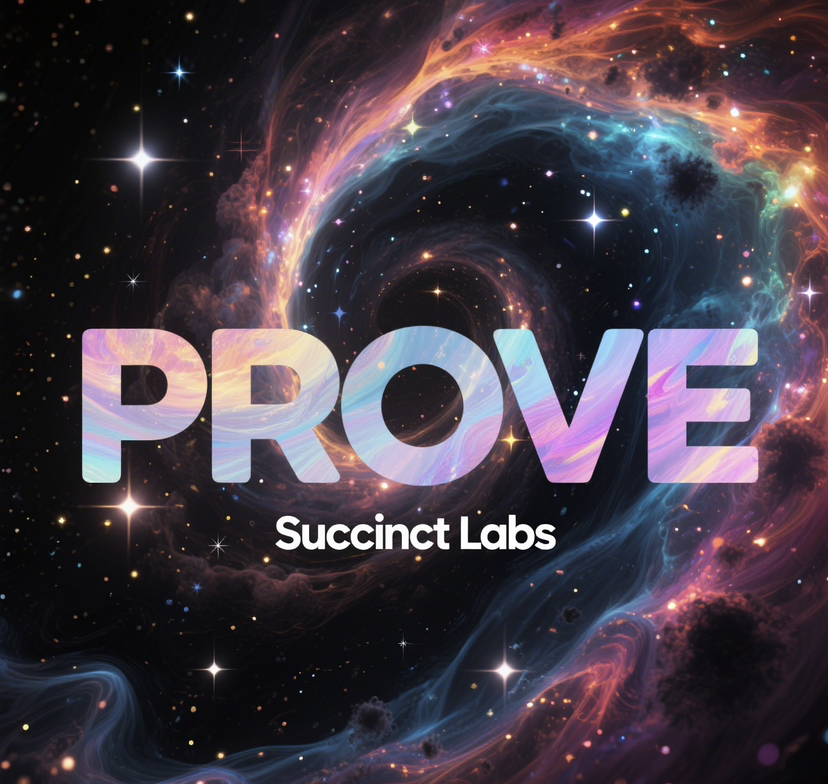When ZK technology sheds its 'hardcore exterior' 🧥.
Imagine this - you want to add a 'privacy filter' to blockchain data without having to hire top cryptography experts or set up server clusters, just like using a Polaroid camera, you can generate a privacy-protected 'encrypted photo' (zero-knowledge proof) with the press of a button. This is not a simplified technology, but the 'democratization of ZK' realized by Succinct Labs using SP1 and a decentralized Prover network.
It has done something disruptive to the industry: turning zero-knowledge proofs from 'toys for a few experts in a lab' into 'practical tools that every developer can master'. Just like simplifying complex darkroom printing techniques into instant photo capture - the performance is uncompromised, yet the operation is absurdly simple.
Two major 'ZK Polaroid' black technologies ✨
SP1: The 'dummy camera' of the zero-knowledge world 📷
Traditional ZK proof generation is like a 'manually focused film camera', requiring extensive low-level code writing and circuit optimization, which can take months; SP1, on the other hand, is like an 'autofocus digital camera': developers only need to write a few lines of code in familiar Rust language, call existing proof templates, and they can generate zero-knowledge proofs for smart contracts, cross-chain data, and user privacy information. For example, if you want to prove 'I have 100 ETH but not expose my address'? With SP1's pre-made modules, it can be done in 30 minutes - even a cryptography novice can handle it.
Decentralized Prover Network: 'Distributed Printing Station' 🏪
Generating complex ZK proofs requires massive computational power, just like printing high-definition photos needs professional equipment. Succinct's Prover network turns this into a 'global printing station': thousands of nodes distributed to process proof tasks, and after you submit your request, you can receive results in as little as a few seconds, without having to buy graphics cards or set up servers. It's like running out of Polaroid film and directly tapping into the resources of printing shops around the city, cutting costs in half without worrying about equipment maintenance.
PROVE token: More than just 'film', but also a 'membership card' 🎫
Fuel function: Generating proofs consumes PROVE, just like a Polaroid needs film;
Node ticket: Staking PROVE is required to become a Prover node, participate in 'distributed printing' to earn rewards; the more nodes, the faster the network processing speed;
Function unlock: Holders can experience advanced SP1 templates first, such as AI reasoning proofs and cross-chain asset proofs, just like members getting limited edition camera filters.
Why it is the 'key piece' 🧩 in the popularization of ZK.
Today’s Web3 lacks usable ZK technology, not ZK technology itself. Too many projects are stuck at the threshold of 'difficult proof generation and high deployment costs', just like a photographer with a good idea but unable to use a darkroom. What Succinct Labs does is dismantle this barrier:
For developers, SP1 improves ZK integration efficiency by more than 10 times, what used to take 3 months can now be done in 1 week;
For users, the Prover network reduces proof generation costs by 60%, making privacy protection no longer a 'luxury';
For the entire ecosystem, it has transformed ZK from 'concept hype' into actual application scenarios - such as privacy trading in DeFi, copyright proof for NFTs, and security verification for cross-chain bridges.
In the future, when you hide transaction amounts with one click in a DApp, or verify your identity in the metaverse without exposing privacy, the proof generated by SP1 may be silently at work behind the scenes. At that time, you will realize: the best technologies never make users look up at complexity, but make professional functions as natural as taking a photo.
And Succinct Labs is pressing this 'shutter'. 📸
#SuccinctLabsPROVE @Succinct $PROVE
